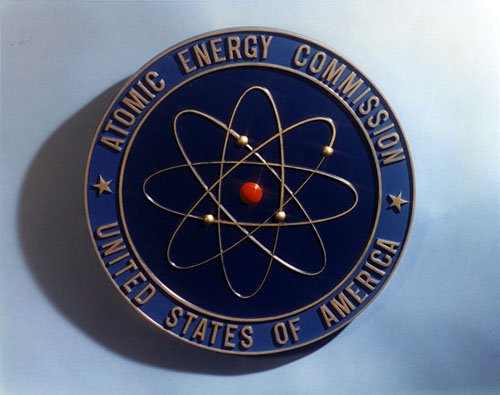The (former) U.S. Atomic Energy Commission had a seal showing a symbolic view of the atom that is unrealistic but instantly recognizable:
Source: https://blog.nuclearsecrecy.com/2012/04/13/friday-image-the-atomic-energy-commission-seal-1949/
Taken literally, this would represent the atom beryllium (because it shows 4 electrons). The blog author in the source points out that the most important part for nuclear energy (the nucleus) might have been shown with more detail. While we know today that electrons behave very differently, I am wondering why the electrons are shown in orbits that are at an angle to each other. Many cartoons of atomic structure do this (the most common one has three orthogonal orbits), and I am sure many pre-date this particular example.
If the inspiration for Bohr's model was the solar system, wouldn't you show the orbits all in the same plane, with different radii like in the solar system? Was there something known at the time Bohr created the model (or before 1949, when the seal was created) that would motivate out-of-plane orbits (maybe angular momentum)? Or is this a purely artistic choice, helping to make the cartoon more compelling and three-dimensional?

